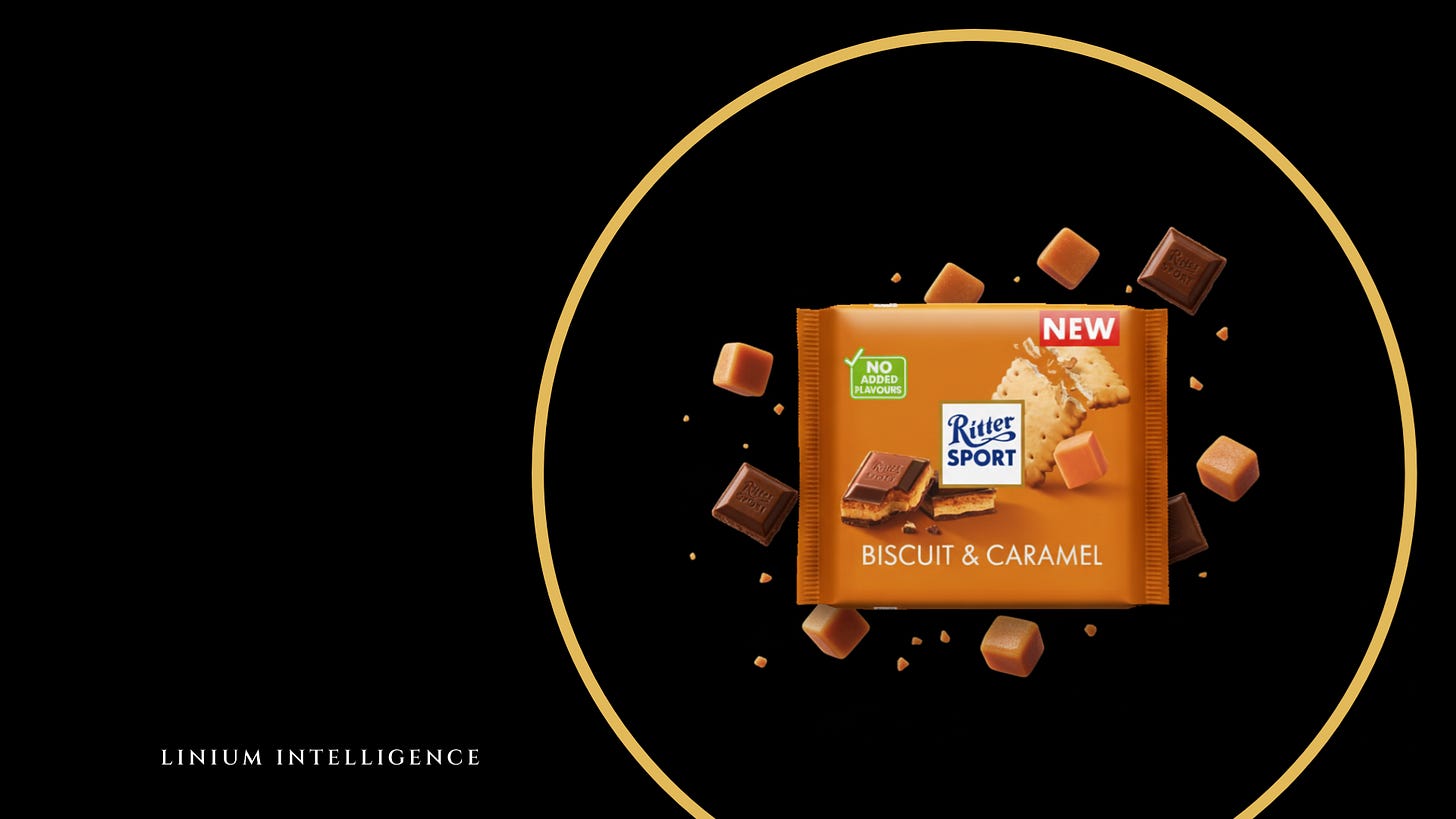Ritter Sport Launches Biscuit & Caramel Bar In The UK
Ritter Sport has unveiled a new addition to its chocolate confectionery line in the United Kingdom with the launch of the Biscuit & Caramel bar, now available in Sainsbury’s stores. The product combines crunchy biscuit pieces with smooth caramel, enrobed in Ritter Sport’s signature milk chocolate. Marketed as a playful twist on a classic chocolate biscuit, the launch emphasizes indulgence and textural contrast, positioning it as a snack that blends familiarity with a premium chocolate experience.
This release follows Ritter Sport’s recent expansion of nut-forward offerings, including the Roasted Peanut bar, which features smooth milk chocolate packed with salted peanuts. Both introductions reflect a continued focus on flavour innovation and textural variety, aligning with broader consumer interest in indulgent, experiential snacking.
Market Positioning
The UK chocolate confectionery market is dominated by a handful of established brands, with Cadbury and Lindt leading in scale and visibility. Cadbury maintains a strong presence with a range of iconic bars and seasonal products, while Lindt positions itself in the premium sector with products such as Lindor truffles and limited-edition flavour expansions like the recent Pistachio and Caramel bars. Other competitors, including Kinder, Galaxy, KitKat, and emerging craft brands, collectively contribute to a dynamic market with frequent product launches targeting innovation, seasonal relevance, and premiumisation.
Market And Brand Observations
Ritter Sport: Positioned as a premium, accessible chocolate brand with a focus on flavour experimentation and textural play. Recent product launches include Caramel & Biscuit and Roasted Peanut bars, emphasizing indulgent snacking experiences.
Cadbury: The clear market leader with broad consumer recognition; maintains category dominance through classic bars, limited editions (e.g., Biscoff, Twirl White Dipped), and seasonal products.
Lindt: Positioned in the premium segment, leveraging limited editions, luxury truffles, and in-vogue flavours (e.g., Lindor Shortbread Truffles, Dubai Style bars).
KitKat, Galaxy, Nestlé, Reese’s: Active in flavour innovation, seasonal releases, and sharing formats; KitKat notably expanding with new marbled, salted caramel, and citrus variants.
Industry Trends And Themes
Nut-focused innovation: Peanuts, pistachios, and hazelnuts appear across multiple launches, enhancing texture and premium perception (Ritter Sport Roasted Peanut, Lindt Hazelnut Wafer). Pistachio in particular is a top flavor in the UK.
Premiumisation and craft positioning: Boutique and high-end brands highlight artisanal techniques, quality ingredients, and sophisticated flavour profiles (The Little House Dorset Lunar New Year bonbons, Läderach FrischSchoggi).
Flavor complexity and fusion: Combining traditional chocolate with unexpected elements—spices, tea, alcohol, or international dessert inspirations (Salt & Sugar Art Chocolate Amazonian spices, Gnaw Chocolate British dessert-inspired bars).
Textural innovation: Incorporation of crunchy, creamy, or layered elements to create multi-sensory experiences (Tony’s Chocolonely Milk Rice Crispy Caramel, Läderach Walnut Brownies Milk-Dark).
British flavours gaining popularity: Traditional UK tastes such as shortbread, classic puddings, and other culturally resonant ingredients are increasingly featured in launches (Lindt Shortbread Truffles, Gnaw Spiced Apple Strudel, Cherry & Almond Tart), appealing to nostalgic trends and local taste preferences.

